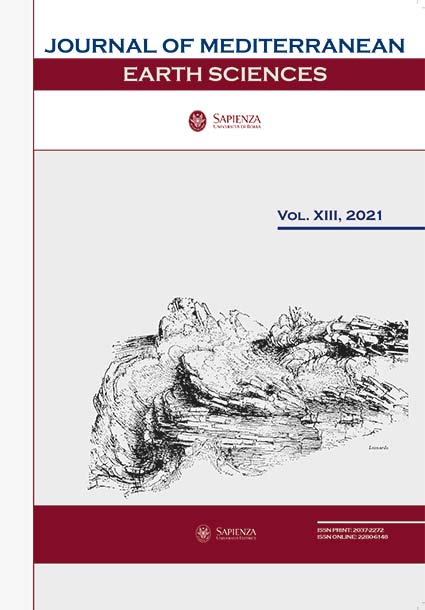Controls on the development and distribution of splays in modern and ancient fluvial systems: examples from the Parapeti river, Bolivia and the Miocene Ebro basin, Spain
DOI:
https://doi.org/10.13133/2280-6148/17284Keywords:
fluvial system, avulsion, splay deposits, sheet-like sandstonesAbstract
The vertical and lateral aggradation of splay deposits in continental environments can form extensive sheet-like sandstones which may form an important but often overlooked component of subsurface hydrocarbon reservoirs. This study examines splay deposits of the Parapeti River, Bolivia, a modern day distributive fluvial system (DFS). Overall emphasis is given to the spatial and temporal relationship between sedimentary facies at the distal part from 1972 to 2014. A sedimentary facies evolution model is created to account for the development of the distal part. Rock record examples from the Miocene Huesca DFS in the Ebro Basin, Spain were studied in order to compare dimensional data as well as understand the relationship between splays and associated channel bodies. The study area is characterized by thin sandstone sheets interbedded with mudstones and siltstones interpreted to represent a terminal splay complex based on the distribution of facies, architectural elements and paleocurrent data. There is a strong resemblance between the model developed for the Parapeti DFS and the splay complexes recorded in the Miocene Huesca DFS. Sedimentary models are proposed in which terminal splay formation through avulsions is considered to be the dominant process in the distal parts of both systems. However, it is suggested that different types of avulsion successions recognized by previous workers, may not be distinguishable in the rock record as they can produce a similar stratigraphic signature.Downloads
Published
2021-09-29
How to Cite
Thi Thuy, L. D. (2021). Controls on the development and distribution of splays in modern and ancient fluvial systems: examples from the Parapeti river, Bolivia and the Miocene Ebro basin, Spain. Journal of Mediterranean Earth Sciences, 13. https://doi.org/10.13133/2280-6148/17284
Issue
Section
Articles
License
The submission has not been previously published, nor is it before another journal for consideration (or an explanation has been provided in Comments to the Editor).


